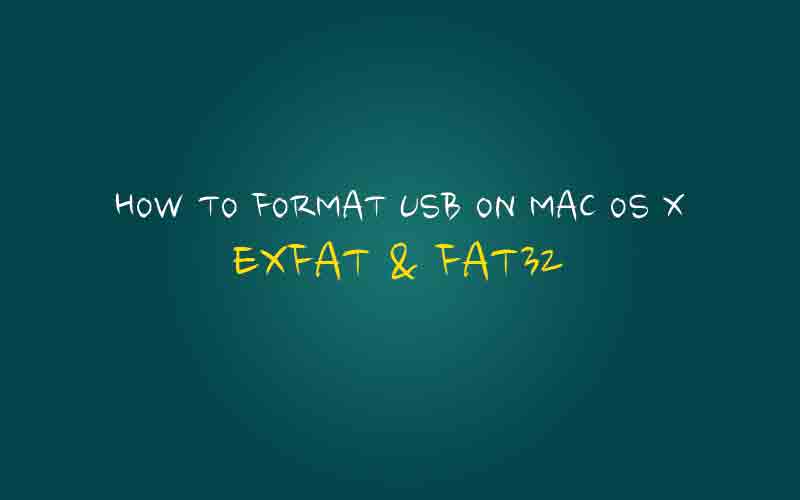How To Format For Exfat On Mac
Nowadays, when you buy a USB drive, you can use it right out of the box with your Mac. However, unless it’s been designed for use with a Mac, it won’t be formatted using macOS’ preferred file system (either Mac OS Extended or APFS, depending on which version of macOS you’re running). That’s because most of the computers in the world run Windows, and Windows uses a different file system, usually one known as Fat32. Drives formatted as Fat32 can be read from and written to by macOS, but it’s not optimal and you’re more likely to run into problems than if you use macOS’ native format. So, if you’ve bought a USB drive that’s formatted as Fat32, or any other format other than Mac OS Extended (also known as HFS+) or APFS, here’s how to format a USB drive on Mac. It’s exactly the same procedure if you need to reformat a flash drive on a Mac. How to format a USB drive on a Mac 1.

How To Format Sd Card Exfat On Mac
How to format a USB drive to FAT32 on a Mac The main reason for formatting a USB drive as Fat32 on a Mac is that you want to be able to use the drive on a Windows PC, as well as a Mac — perhaps to transfer files between the two machines. For a hard drive to be able to be read and written to in both a PC and Mac computer, it must be formatted to ExFAT or FAT32 file format. FAT32 has several limitations, including a 4 GB per-file limit. This is a file system limitation that affects both Mac's and PC's, and the only workaround is to format the drive to exFAT.
Plug the drive into a USB socket (if you have a recent MacBook or MacBook Pro that only has USB-C connectors, you’ll need a USB-C to USB-A adaptor). Open a new Finder window and click on the drive.
Make sure it has no files on it that you need. The process of reformatting it will wipe all the data from it. Once you’ve copied any files you need from the USB drive to your Mac, go to Applications>Utilities and double-click on Disk Utility. Click on the USB drive in the sidebar and then choose Erase from the toolbar at the top of the window. In the window that drops down type a name for the formatted drive in the box next to Name. Choose a format from the dropdown menu.
If you have previously stored sensitive data on the drive, click the Security tab. Choose a security level using the slider. The further to the right you move the slider, the more ‘passes’ the erase tool will make and the more securely files will be deleted. Making exclusions for avast mac 2016. However, it also increases the time it takes to format the drive quite considerably. Click Ok then click Erase. Tip: You don’t need to erase a whole drive to delete files securely.
If you have confidential files or sensitive data you need to remove from your Mac completely, you should use File Shredder. It’s specifically designed to securely delete sensitive data and will render it unrecoverable. You can download CleanMyMac X for free. Which format to choose? If your Mac is running macOS High Sierra or later, you have two options for file formats: APFS and Mac OS Extended.